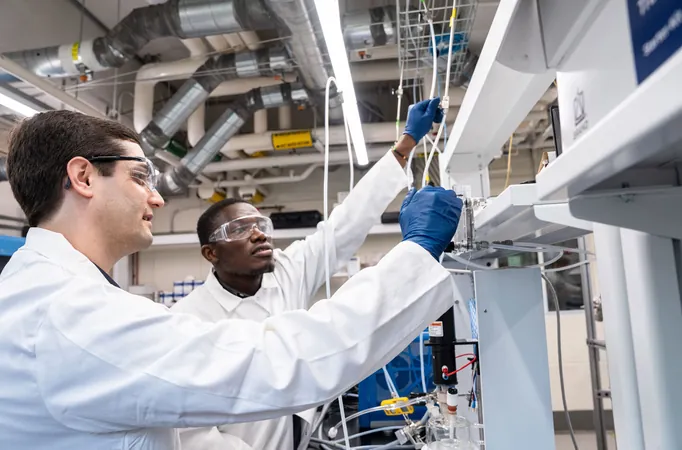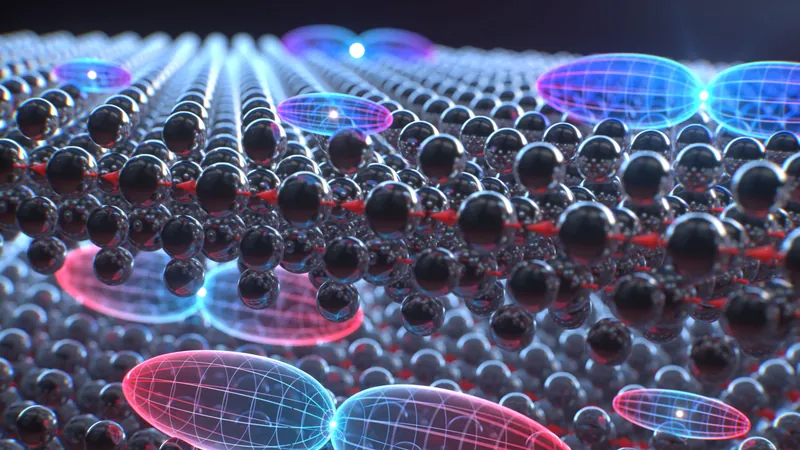
Scientists Harness AI to Uncover Hidden Alien Earths!
2025-04-16
Author: Sophie
In a groundbreaking leap for astronomy, a cutting-edge machine learning algorithm has been unleashed, leading to the discovery of nearly 44 stars that are highly likely to host rocky Earth-like planets in their habitable zones!
Jeanne Davoult, an astronomer at the German Aerospace Agency DLR, expressed excitement, stating, "The model identified 44 systems that could potentially harbor unseen Earth-like planets." Further studies have bolstered these claims, confirming the likelihood of these stars supporting life-sustaining worlds.
Traditionally, astronomers stumbled upon these "Earth-like" planets—defined by their similar mass and ideal distance from their stars—by chance during extensive surveys of thousands of stars. To tilt the odds in their favor, a more strategic approach was essential.
This prompted Davoult, during her tenure at the University of Bern in Switzerland, to devise the innovative algorithm. The challenge? Training an accurate model in a realm where only about 6,000 exoplanets have been identified, and their data remains incomplete.
To overcome this hurdle, Davoult teamed up with fellow researchers at the University of Bern to leverage the Bern Model, a sophisticated tool that simulates planets based on existing knowledge of planetary systems. Romain Eltschinger and Yann Alibert highlighted the model’s unique ability to weave together complex physical processes to predict how planetary systems evolve.
The algorithm crunched through a stunning 53,882 simulated planetary systems, examining diverse star types, including our sun-like G-type stars and various red dwarfs.
Delving deep, the algorithm sought patterns connecting the likelihood of Earth-like planets to different planetary architectures. Some correlations became apparent—like the presence of an inner rocky planet often found alongside a massive gas giant, mirroring our own solar system’s setup.
Conversely, a distinct anti-correlation emerged: hot Jupiters—gas giants orbiting closely to their stars—typically disrupt the orderly formation of rocky planets. Recognizing these relationships is vital for pinpointing the presence of potentially habitable worlds.
Davoult’s earlier research brought to light additional correlations, suggesting that factors like the mass and orbital period of the innermost detectable planet are strong indicators of whether a system might host a temperate Earth-sized planet.
For instance, she discovered that around G-type stars, an Earth-like planet becomes increasingly likely if the closest detectable planet has a radius greater than 2.5 times that of Earth or orbits its star in more than 10 days.
With this newfound knowledge, the algorithm was fine-tuned for real-world application, achieving a staggering precision rate of 99%. This means nearly all identified systems are expected to host at least one Earth-like planet!
The algorithm's true potential shines as it processes observational data, identifying 44 stellar candidates ripe for further exploration—allowing astronomers to target their search instead of casting a wide net.
Looking ahead, the European Space Agency’s upcoming PLATO mission aims to unveil thousands of transiting planets. By applying this innovative algorithm to PLATO's findings, astronomers are set to efficiently pinpoint systems with the highest probability of harboring Earth-like planets.
As Alibert aptly noted, “This is a monumental stride in the quest for planets that could support life—and ultimately, the pursuit of extraterrestrial existence!”









 Brasil (PT)
Brasil (PT)
 Canada (EN)
Canada (EN)
 Chile (ES)
Chile (ES)
 Česko (CS)
Česko (CS)
 대한민국 (KO)
대한민국 (KO)
 España (ES)
España (ES)
 France (FR)
France (FR)
 Hong Kong (EN)
Hong Kong (EN)
 Italia (IT)
Italia (IT)
 日本 (JA)
日本 (JA)
 Magyarország (HU)
Magyarország (HU)
 Norge (NO)
Norge (NO)
 Polska (PL)
Polska (PL)
 Schweiz (DE)
Schweiz (DE)
 Singapore (EN)
Singapore (EN)
 Sverige (SV)
Sverige (SV)
 Suomi (FI)
Suomi (FI)
 Türkiye (TR)
Türkiye (TR)
 الإمارات العربية المتحدة (AR)
الإمارات العربية المتحدة (AR)